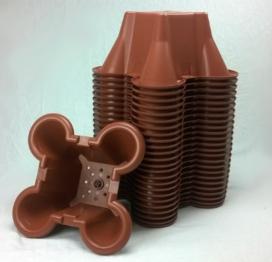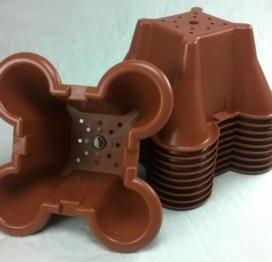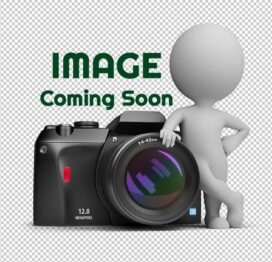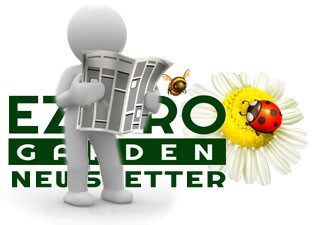
Anatomy of an EZ GRO Tree
An EzGro Tree in an ideal way to grow all your plants in a small amount of space. All varieties of vegetables and herbs can be grown, and do very well, in this system. There are many components that are necessary to build the EZ GRO Tree, and each one is an important part of the system. This tree design is meant to last in the ground for 10 years or more, so once the set-up is done, a future of delicious, fresh produce is in order!
Here we will break down the Tree and explain what each of its components are, what they do, and how they all fit together. The first seven items described are part of the structure of the Tree. Just as a real tree, the structure starts at the roots, so this list is organized from the ground up.
.
1. Support Tube: This is driven into the ground, and acts as the foundation for the entire tree. It’s especially important for stability in areas with sandy soil. In heavy clay soils you don’t have to use this support tube.
2. Inner Support Tube: This is the backbone of the tree. It is slid over the Support Tube and driven into the ground. It rises above ground to support the entire tree.
3. Foot Pad: This is slid down the support tube and sits on the ground; it is a place for the tree trunk to rest on top of. It helps disperse the weight of the tree over a larger area so as not to sink.
4. Tree Foot: This is slid down the support tube and adapts the tube to the tree trunk.
5. Tree Trunk: This fits over the Inner Support Tube, and connects to the Tree Foot. The length is determined by the crop grown.
Note: Image of common EZ GRO Trees Above.
•Tall Tree Trunk: 2 Quad pot stack, Tomatoes
• Medium Tree Trunk: 5 Quad pot stack, Peppers, Eggplant
• Short Tree Trunk: 6 or 7 Quad pot stack, herbs, lettuce, leafy greens, cucumbers
6. Quad Pots: This is the grow space, where the plants grow. Each pot has four rounded corners specifically designed for optimal plant growth. The center of the side of each pot has a groove where the corners of another pot can rest. This is so they can be stacked in a rotating manner, allowing the most space possible for each plant to grow.
7. Spacer (inside each pot): This fits over the Inner Support Tube inside each Quad Pot. This is important to separate the grow media from the Inner Support Tube, which allows the Quad Pots to easily be removed from the stack and worked on. It also distributes the weight evenly among all Quad Pots in the Tree.
The next seven components deal with irrigation, and are organized from the top down.
1. Tree Top: These slides onto the end of the Inner Support Tube at the top of the Tree, and the Irrigation Line passes through it. It can easily be pulled off to move the Irrigation Line out of the way so the Tree can be unstacked.
2. Misting Line: Located above the Irrigation Line. Plants can be misted in hot weather, or it can be used to apply a foliar spray treatment, such as Neem oil, to plants.
3. Irrigation Line: This is the flexible pipe through which the nutrient solution is delivered to the tree. Its flexible nature makes it easy to slide pots off the top of the Tree. It is connected to a pump inside the nutrient reservoir. When multiple EzGro Trees are placed in a row, the Irrigation Line is placed above all the Trees.
4. Feed Lines: These are connected to the Irrigation Line, and are the tubes through which the nutrient solution flows from the Irrigation Line into the Dispersion Pot
5. Diffuser Pot: This is a round pot with evenly spaced holes in the bottom. It’s function is to distribute the nutrient solution from the feed lines so it reaches the root zone of all plants in the Tree
6. Tree Gasket: This goes on support tube between drain dish and bottom most quad pot to make a water tight fit so any water coming down the support tube goes into the recycle pot.
7. Recycle Pot: This is a round pot with a center support and a drain hole. It is designed to catch all the nutrient solution that the roots did not utilize, and direct it into the drain line. It has a groove designed to fit with the Tree Trunk
8. Drain Line: This is where nutrient solution is collected, and can flow back into the nutrient reservoir for re-use














